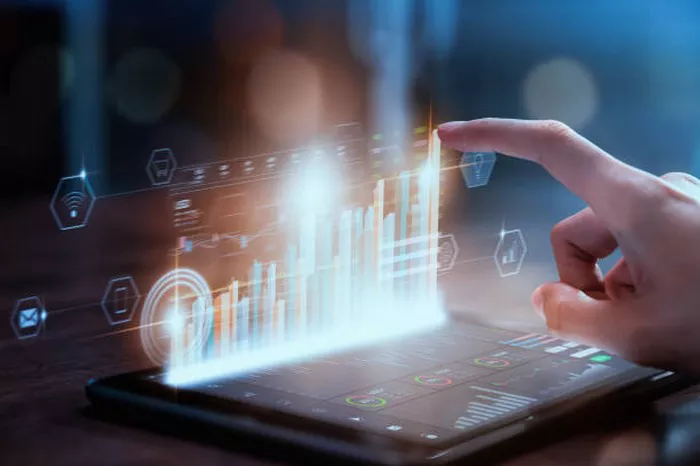Futures contracts are among the most dynamic and widely used financial instruments in the global markets. They allow traders and investors to speculate on price movements, hedge against risks, or secure stable prices for future transactions. These contracts span across commodities, financial indices, and currencies, reflecting the critical sectors of the global economy. Understanding the most heavily traded futures gives insight into the markets that attract the highest levels of interest and liquidity.
Introduction to Futures Trading
The Role of Futures in Modern Markets
Futures contracts are agreements to buy or sell an asset at a predetermined price on a future date. They serve both speculative and practical purposes. For speculators, they are opportunities to profit from price changes. For producers, consumers, or financial institutions, they provide a way to lock in prices and manage risks.
High Trading Volumes and Their Implications
The most heavily traded futures attract significant attention because they indicate market trends, liquidity, and investor confidence. Higher trading volumes often lead to tighter bid-ask spreads, making these futures appealing for both individual traders and institutional investors.
1. Crude Oil Futures
A Global Benchmark
Crude oil futures, particularly those tied to West Texas Intermediate (WTI) and Brent crude, are the most traded energy futures. These contracts set the benchmark prices for the global oil market.
Volatility and Opportunity
Crude oil futures are known for their price volatility, driven by geopolitical events, supply chain disruptions, and economic trends. For instance, during the COVID-19 pandemic, oil futures experienced sharp fluctuations, attracting massive trading volumes.
2. Gold Futures
A Safe Haven Asset
Gold futures are highly traded due to their role as a safe haven during times of economic uncertainty. Gold’s reputation as a store of value makes it a popular choice for investors.
Inflation and Market Stability
When inflation rises or financial markets become unstable, gold futures see increased trading as investors seek refuge in this precious metal. Gold futures on the COMEX exchange are among the most liquid in the commodities market.
3. Stock Index Futures
Broad Market Exposure
Stock index futures, such as those for the S&P 500, Dow Jones, and NASDAQ, are heavily traded by investors looking to gain exposure to entire market indices rather than individual stocks.
Portfolio Management
These futures are often used for hedging against potential losses in portfolios or for speculating on market trends. During major market events, trading volumes in stock index futures surge as investors react to news and developments.
4. Natural Gas Futures
Energy Market Staple
Natural gas futures are vital for energy producers, utility companies, and traders. They are traded extensively on exchanges like the New York Mercantile Exchange (NYMEX).
Seasonal Influences
The demand for natural gas fluctuates based on weather patterns, particularly during winter months. These seasonal trends contribute to the high trading volumes in natural gas futures.
5. Currency Futures
Major Currency Pairs
Currency futures, such as those for the Euro, Japanese Yen, and British Pound against the US Dollar, are among the most actively traded financial instruments. They are essential for businesses and investors engaged in international trade.
Hedging Exchange Rate Risks
Corporations and traders use currency futures to hedge against exchange rate fluctuations. The high liquidity of these contracts makes them a preferred choice for managing currency risks.
6. Soybean Futures
Agricultural Commodity Importance
Soybean futures are critical in the agricultural markets, representing a staple crop used in food, animal feed, and biofuels. They are traded on the Chicago Board of Trade (CBOT).
Global Demand
The global demand for soybeans, particularly from countries like China, drives high trading volumes. Weather conditions and trade policies significantly influence soybean futures prices.
7. Silver Futures
A Dual Role Asset
Silver futures are traded extensively due to the metal’s dual role as both a precious metal and an industrial commodity. Like gold, silver is viewed as a store of value during economic instability.
Industrial Applications
Silver is also used in electronics, solar panels, and other industrial applications, adding to its trading appeal. This diverse demand contributes to its high trading volumes.
8. Bitcoin Futures
A New Market Player
Bitcoin futures represent the rapidly growing interest in cryptocurrencies. Launched on major exchanges such as the Chicago Mercantile Exchange (CME), these contracts provide a regulated way to trade Bitcoin.
Speculation and Volatility
Bitcoin futures are highly volatile, making them attractive to speculative traders. The sharp price swings in the cryptocurrency market often lead to significant trading activity in these futures.
9. Copper Futures
An Economic Barometer
Copper futures are often referred to as a barometer of global economic health. Copper is a key industrial metal used in construction, electronics, and manufacturing.
Price Sensitivity
The price of copper is highly sensitive to changes in economic activity, particularly in major economies like China and the US. This sensitivity leads to significant trading volumes, especially during periods of economic uncertainty.
10. Treasury Bond Futures
A Safe Investment Option
Treasury bond futures, particularly those tied to US government bonds, are among the most heavily traded fixed-income futures. They are essential for investors seeking stability and predictability.
Interest Rate Sensitivity
The trading volumes in treasury bond futures are influenced by expectations of interest rate changes. Central bank policies, such as those of the Federal Reserve, play a significant role in driving trading activity.
Conclusion
The most heavily traded futures reflect the diverse needs and interests of market participants, ranging from energy and agricultural commodities to financial instruments and cryptocurrencies. Each type of futures contract offers unique opportunities for hedging, speculation, and investment. Whether you are an experienced trader or a newcomer to the market, understanding these high-volume futures can help you navigate the complex world of trading with greater confidence. The dynamic nature of these markets ensures that futures trading will remain a critical component of the global financial system.
Related topics:
Do You Know the Cost of Trading Micro Futures?
17 Reasons Why People Choose to Invest in Futures


